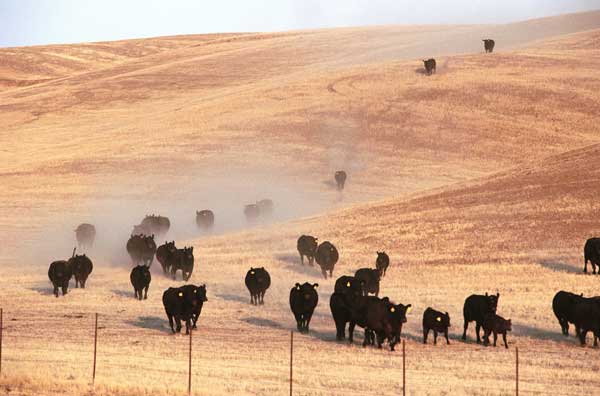
Beef cow slaughter in federal Region 6 – Oklahoma, Texas, Arkansas, Louisiana and New Mexico – has decreased each of the last three weeks.Feeder cattle auction totals are currently close to year-ago levels but may drop lower.Feedlot inventories should begin to drop for the remainder of the year and into 2012.
October 25, 2011

The worst of the drought-forced movements of cattle may be slowing down.
“It is possible these totals could grow, but there is reason to think that much of the normal culling has already occurred and that seasonal culling in November will be smaller than usual,” said Derrell Peel, Oklahoma State University Cooperative Extension livestock marketing specialist.
Beef cow slaughter in federal Region 6 – Oklahoma, Texas, Arkansas, Louisiana and New Mexico – has decreased each of the last three weeks, though the rate is still 19 percent above last year in the most recent week that data is available. “Beef cow slaughter outside of Region 6 also has been greater than last year since late July,” Peel said. “However, this may be tapering off as well with a smaller increase in the most recent data.”
For the year to date, Region 6 slaughter is 24 percent above last year. When combined with the rest of the country, beef cow slaughter has decreased 2 percent, resulting in a national total year-to-date beef cow slaughter number that is 105 percent of year-ago levels.
In Oklahoma, the auction totals for cows are still greater than year-ago levels as well, but have decreased significantly from the extremely large volumes of the summer.
“Feeder cattle auction totals are currently close to year-ago levels but may drop lower if, as expected, some of the normal fall run of calves has already occurred in drought-forced early sales,” Peel said.
The latest Cattle on Feed report also suggests a more normal pattern of placements without much obvious drought impacts. Total placements were down in Texas, though higher in the lightweight category.
“In fact, the under-600-pound weight group was the only group with an increase in placements, indicating limited supplies of heavy feeder cattle,” Peel said. “Overall, placements were even with year-ago levels and should be enough to hold cattle on feed totals even with last month at 105 percent of year-ago levels.”
However, Peel believes feedlot inventories should begin to drop for the remainder of the year and into 2012.
“Oklahoma feeder cattle prices, especially calves, have increased recently despite the lack of wheat pasture grazing this fall,” he said. “A break in corn futures in early October spurred feedlot demand for feeder cattle and offset the lack of wheat pasture grazing demand.”
The biggest increase in feedlot placements occurred in Nebraska, which was comprised of increases in both the lightest and heaviest placement categories.
“Excellent forage conditions likely means that more big yearlings will be marketed out of the northern Great Plains states this fall; however, overall feeder supplies will be tight,” Peel said.
You May Also Like



